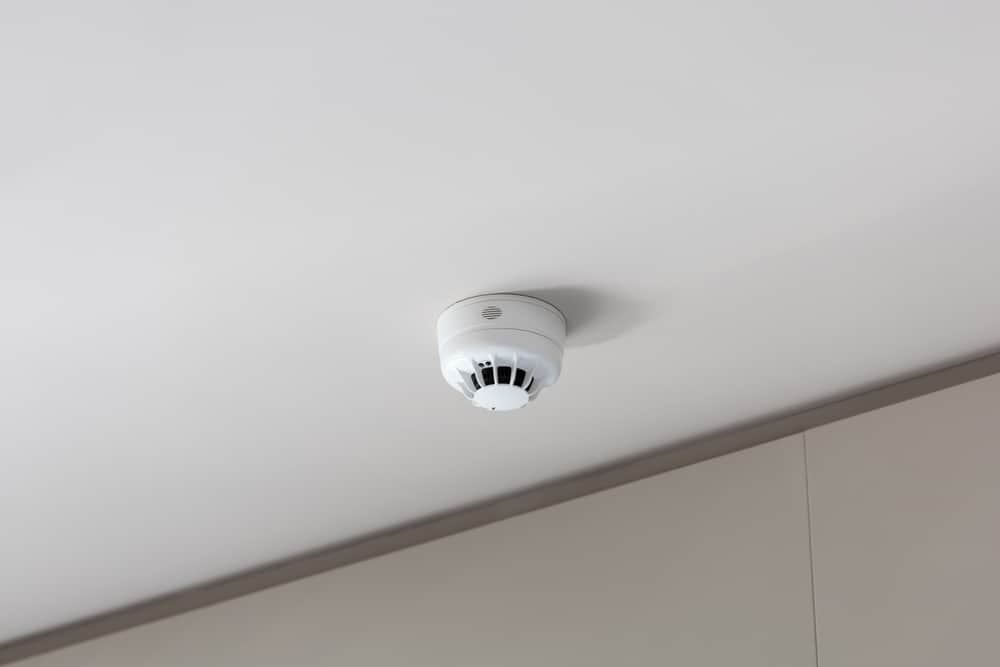In the modern world, where the focus is significantly shifting towards cultivating healthier living environments and maintaining sustainable practices, vape detectors serve as crucial components in safeguarding the sanctity of smoke-free areas. These devices have garnered monumental importance as vaping devices and e-cigarettes are becoming increasingly commonplace.
The phenomenon of vaping, which involves inhaling vaporized liquid containing nicotine, is now a growing concern, especially among the younger generation, making the role of effective detection technologies pivotal. Vape detectors are the linchpins ensuring adherence to smoke-free environment norms, helping to foster healthy atmospheres in public spaces, schools, and workplaces.
The Rise of Vaping

Vaping and e-cigarettes have witnessed a colossal rise in popularity in recent years, leading to a profound paradigm shift in nicotine consumption patterns from conventional smoking. This is largely fuelled by the widespread belief and marketing strategies portraying vaping as a seemingly safer alternative to traditional tobacco smoking. This surge in vaping has posed severe and unique challenges to maintaining smoke-free environments.
The vapor from e-cigarettes is often almost invisible and has a much less discernible odor compared to traditional cigarette smoke, making vaping a more discreet and hard-to-detect activity. The subtleness of vaping necessitates innovative technological solutions, such as vape detectors, to effectively uphold and enforce non-smoking regulations in various establishments and public spaces, ensuring the well-being of individuals and adherence to public health guidelines.
Understanding Vape Detectors
Vape detectors are sophisticated, innovative devices meticulously designed to sense and detect the aerosols and vapors released by e-cigarettes and vaping devices. These devices stand out distinctly from conventional smoke detectors, which are engineered to detect particles from burning materials.
Traditional smoke detectors respond to the visible particles of smoke produced by combustion, while a vape detector is attuned to sense the microscopic vapor particles, thus providing a more nuanced approach to maintaining air quality. Their importance lies in their capability to accurately discern between smoke and vapor, ensuring that establishments can efficiently enforce no-smoking policies, mitigating health risks associated with second-hand exposure, and maintaining the integrity of smoke-free zones.
Types of Vape Detectors

In the diverse market, numerous types of vape detectors are available, each employing distinct technologies catering to specific applications and settings. These technological variations range from particulate matter sensors to gas detectors, each meticulously designed to detect vaping aerosols effectively.
These detectors not only play a pivotal role in maintaining a healthy environment by detecting the presence of harmful substances but also help in enforcing no-smoking policies by alerting the authorities about the violation of rules. It is crucial to understand the underlying technologies and applications of different vape detectors to choose the most suitable one for a given environment and to address the specific challenges posed by vaping in various contexts.
Sensor Technologies
Delving into the core of vape detectors, sensor technologies are paramount. They are the intricate components that empower detectors to discern vaping aerosols from other airborne particles meticulously. The sensors are engineered to detect specific chemicals and particles present in vaping aerosols, distinguishing them from common environmental contaminants.
The specificity and sensitivity of these sensors are vital, ensuring that vape detectors can accurately identify the presence of vaping aerosols, minimizing the chances of false alarms, and enabling a more targeted approach to maintaining smoke-free environments.
Data Analysis

The intricate process of data analysis employed by vape detectors is central to their functioning. Advanced algorithms analyze the data gathered by sensors to identify patterns associated with vaping accurately. The intelligent analysis allows vape detectors to differentiate between vaping events and potential false alarms efficiently, enabling establishments to take immediate and appropriate action.
This analytical capability is critical in ensuring the reliability and effectiveness of vape detectors in upholding smoke-free environment norms and mitigating the health risks associated with exposure to vaping aerosols.
Integration with Security Systems
Integration with existing security and surveillance systems enhances the efficacy of vape detectors significantly. By seamlessly integrating into the security infrastructure, vape detectors can provide real-time alerts and monitoring, ensuring immediate response to any vaping incidents.
This synergy is beneficial in optimizing the surveillance capabilities of establishments and aids in the effective enforcement of no-smoking policies, reinforcing the commitment to maintaining a healthy and safe environment for everyone.
Real-World Applications
Vape detectors find their applications in various real-world scenarios, including schools, workplaces, and public spaces, where maintaining a smoke-free environment is paramount. In schools, for instance, they aid in enforcing no-smoking policies among students, ensuring a healthy learning environment.
In workplaces and public spaces, they play a crucial role in upholding public health norms and mitigating the risks associated with second-hand exposure to vaping aerosols. The versatility and applicability of vape detectors make them indispensable tools in fostering healthier and safer spaces.
Privacy Concerns

The deployment of vape detectors raises pertinent questions and concerns regarding privacy. The technology’s capability to monitor and detect vaping raises ethical dilemmas about individual privacy rights and the extent to which monitoring can be justified. The development and implementation of vape detectors necessitate a balanced approach, considering privacy concerns while also addressing the pressing need to maintain smoke-free environments.
Developers and policymakers are working to address these concerns by implementing measures to ensure the responsible use of vape detection technology, focusing on public health benefits while respecting individual rights.
Legal and Ethical Implications
The utilization of vape detectors brings to the fore various legal and ethical considerations. The enforcement of smoke-free spaces through technological monitoring raises questions about the legal ramifications of detecting and reporting vaping incidents.
The evolving landscape of policies and regulations surrounding smoke-free environments and vaping necessitates a thorough examination of the legal and ethical boundaries of using vape detectors. It is crucial to navigate these complexities to ensure that the deployment of vape detectors aligns with legal norms and ethical standards, fostering an environment of trust and responsibility.
Effectiveness and Challenges
The effectiveness of vape detectors in maintaining smoke-free spaces is pivotal, but it is also crucial to address the inherent challenges such as evolving vaping techniques and potential workarounds. The continuous evolution of vaping devices and methods poses a relentless challenge to vape detectors, requiring ongoing advancements in detection technologies. Addressing these challenges is paramount in ensuring the continued relevance and efficacy of vape detectors in safeguarding public health and maintaining the sanctity of smoke-free environments.
Conclusion and Future Trends
Vape detectors are integral components in the quest to maintain smoke-free and healthy environments. They employ sophisticated technologies to detect vaping aerosols accurately, integrate seamlessly with security systems, and find diverse applications in real-world scenarios.
While privacy concerns and legal and ethical implications require careful consideration, the effectiveness and challenges of vape detectors necessitate continuous advancements in technology. Looking ahead, the future holds promising advancements and innovations in vape detection technology, addressing evolving challenges and reinforcing the commitment to public health and safety.







